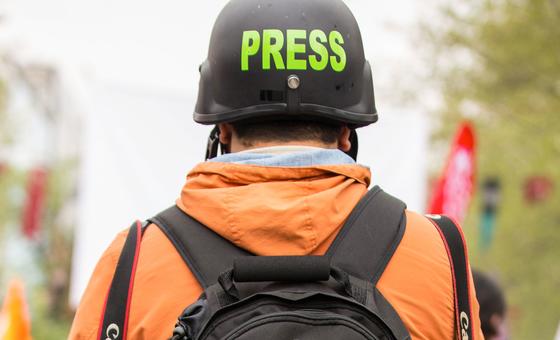UNESCO reported at least 68 murders of journalists in 2024


More than 60% of these murders occur in countries in conflict – the highest rate in more than a decade.
“Reliable information is vital in conflict situations to help affected populations and enlighten the world,” he said. Director General of UNESCO Audrey Azoulay.
“It is unacceptable that journalists have to pay with their lives for this work. I call on all countries to strengthen and ensure the protection of media workers, in accordance with international law,” she added.
Alarming trend
The report emphasizes that 42 journalists were killed in conflict zones this yearincluding 18 cases in Palestine, which had the highest number of deaths.
Other countries such as Ukraine, Colombia, Iraq, Lebanon, Myanmar and Sudan also saw multiple deaths, underscoring increased risks in regions marked by violence and instability.
This follows a worrying trend seen in 2023, with more journalists killed in conflicts in the past two years than in any comparable period since 2016-17.
A ray of hope
While conflict zones remain a serious concern, the overall number of journalist killings has decreased slightly this year.
Significant reductions in mortality occurred in non-conflict areas, where 26 journalists were killed – the lowest number in 16 years.
This decline is especially evident in Latin America and the Caribbean, where killings of journalists fell from 43 in 2022 to 12 in 2024.
This represents some progress in addressing threats to journalists in peacetime, especially in areas previously affected by violence against media workers.
Beyond the numbers
UNESCOOur data is sourced from leading international press freedom organizations, rigorously verified to ensure objectivity.
Cases were excluded if the death was deemed unrelated to the victim’s journalistic work. However, Dozens of cases are still under review and UNESCO continues to closely monitor developments.
The Foundation’s mission extends beyond tracking deaths. It works to protect journalists through initiatives such as the United Nations Plan of Action for the Safety of Journalists and the Issue of Impunity.
Emerging threats
In addition to physical threats, journalists face new challenges, including financial and legal pressures.
UNESCO reported The number of attacks on journalists reporting on environmental issues increased by 42% from 2019 to 2024, highlighting the evolving nature of the risks facing media.
As UNESCO continues its efforts to promote press freedom and protect journalists, it calls on the international community to strengthen protections for media workers – ensuring that the search for truth does not come at a price expensive.




